Abstract
Figures and Tables
Figure 1

Figure 2

Figure 3

Figure 4

Figure 5

Figure 6

Table 2

Table 4

Unit: n (%).
The cases not answered in questions are rejected in analysis.
a)First-aid Counseling & Hospital Transfer Service conducted by the 1339 Emergency Medical Service Information Center.
b)Dispatched medical service at other organizations including a mobile clinic unit.
c)Family health programs for health management of infants & pregnant women, and health promotion program for non-smoking/obesity/temperance, mental health program, etc.
Table 8

Unit: score.
1. It's boring and get me fed up. 2. It makes me frustrated. 3. There is no specific difference whether doing hard on it or doing sloppily. 4. It gives me stress. 5. It requires a lot of time in clerical (administrative) transactions. 6. It's pleasant and rewarding. 7. It gives me an intellectual stimulus and a sense of achievement. 8. It's a acknowledged and socially respected job. 9. It affords a lot of opportunity to display one's own ability. 10. It gives a lot of opportunity to acquire new knowledges or techniques.
The cases not answered in questions are rejected in analysis.
The standard deviation is given in parentheses.
Likert 5-point scale is used to measure.
Table 9

Unit: score.
1. There is sufficient time for business activities. 2. There is a sufficient space for business activities. 3. There is a sufficient workforce for business activities. 4. Immediately after I was assigned to an organization, I received the education & orientation from the relevant organization. 5. Working conditions such as noise, lighting, and indoor temperature are pleasant. 6. The opinions suggested by public health doctors are nicely embraced by the arranged organization. 7. Medical appliances or medical equipment are sufficient enough to do medical service.
The cases not answered in questions are rejected in analysis.
The standard deviation is given in parentheses.
Likert 5-point scale is used to measure.
Table 10

Table 14

Unit: score.
1. Appropriateness of period of time for education. 2. Suitability of educational purpose and contents. 3. Educational environment (lecture room etc.). 4. Educational contents. 5. Length of training period and lecture time. 6. Accessibility of the educational facility. 7. Room and board during education.
The cases not answered in questions are rejected in analysis.
The standard deviation is given in parentheses.
Likert 5-point scale is used to measure.




 PDF
PDF ePub
ePub Citation
Citation Print
Print



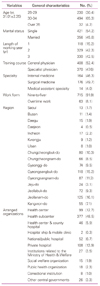
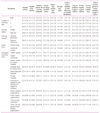
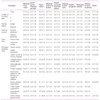





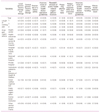
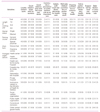
 XML Download
XML Download